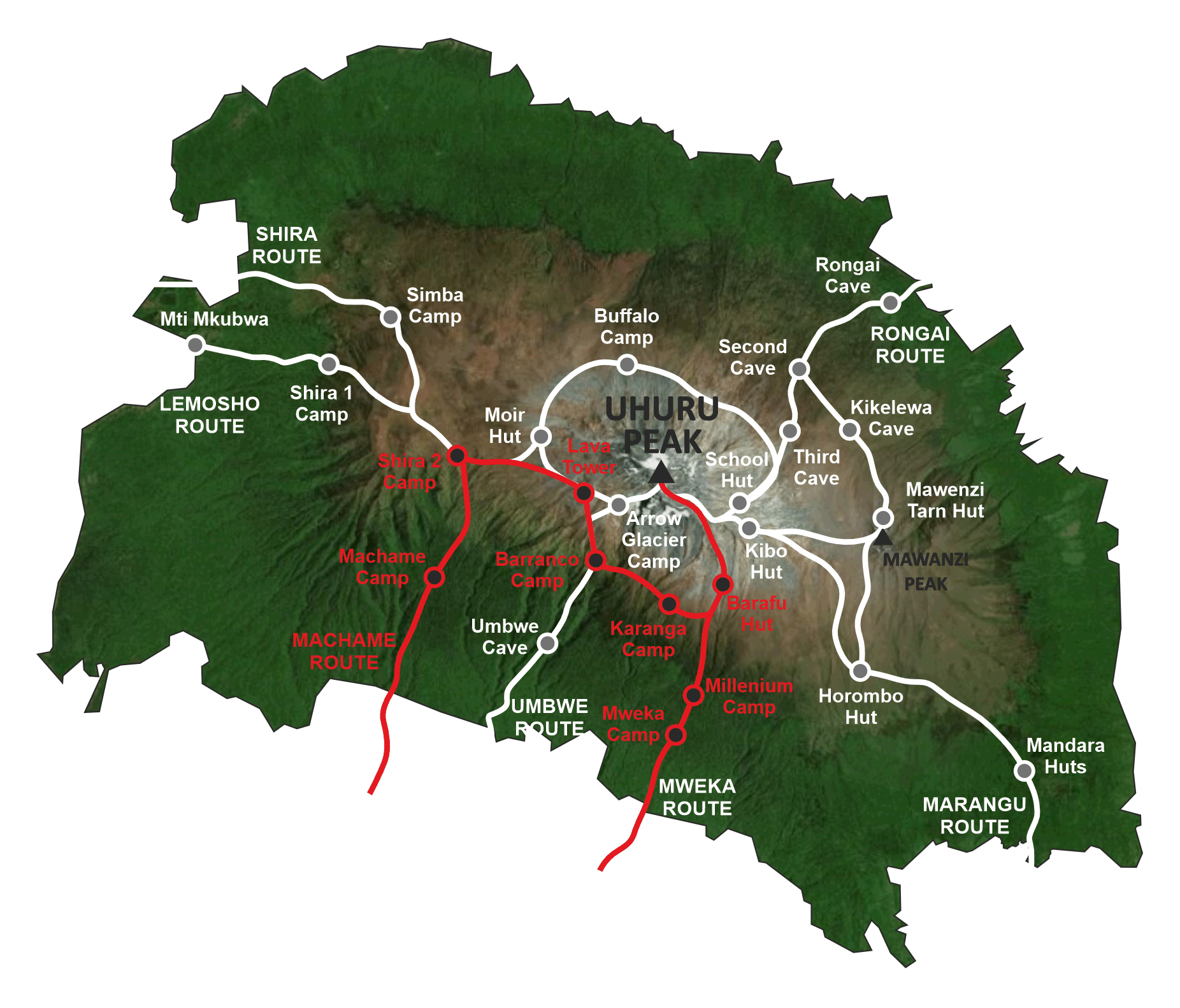
MOUNT KILIMANJARO
Range between 5 – 8 Days
ROUTES
Marangu, Machame, Lemosho and Rongai
BEST TIME TO VISIT
December to mid-March and mid-June to the end of October
Mt. Kilimanjaro is the highest mountain in Africa, and the highest freestanding mountain in the entire world. With enough determination, effort, and a little help from our guides you will ascend to one of nature’s highest peaks. We suggest trekking the Machame route which is considered the most scenic, and along the way you will be accompanied by the most knowledgeable and personable guides available. As part of our service, hot food will be provided for you throughout your hike.

DETAILS:
Tanzania is home to the highest mountain in Africa – Mount Kilimanjaro, standing tall at 5895 meters and holding the title of the world’s highest free-standing mountain. Remarkably, Kilimanjaro is among the most easily accessible high summits globally, allowing most climbers to conquer its pinnacle, Uhuru Peak, armed with little more than a walking stick, appropriate attire, and unwavering determination. Ascending Mount Kilimanjaro is virtual a climatic odyssey, traversing diverse landscapes from the lush tropical rainforest on the lower slopes and the alpine heath to an almost barren alpine desert. The journey culminates in the wintry Arctic summit, cloaked in snow and ice, a stark contrast just 3 degrees south of the Equator.
Embarking on the ascent of Kilimanjaro offers various routes, each presenting a distinct experience. The Rongai, Machame, Lemosho, and the relatively more straightforward Marangu Route open different paths to Uhuru Peak. The duration of the climb spans four to six nights, depending on the chosen route. Among these, the Marangu and Machame Routes emerge as the most favored. The Marangu Route provides accommodation in alpine huts, offering a more sheltered experience, while the Machame Route entails camping throughout the journey. Whether navigating the well-trodden paths or venturing off the beaten track, Mount Kilimanjaro stands as an inviting challenge, beckoning adventurers to discover its varied landscapes and conquer the awe-inspiring heights of this iconic African peak

When to climb
The driest month to climb Kilimanjaro is September. However, it is also one of the coldest and busiest. Because Kilimanjaro is such a large mountain, it has its own weather pattern and it often rains on Kilimanjaro when it is not raining elsewhere. You should prepare for rain and have your rain gear with you at all times while on the mountain. For more information please check out Itinerarys.










